Atelier Sophie 2 is GUST’s finest JRPG
- Developer: GUST
- Publisher: Koei Tecmo
- Release date: 24th February 2022
- Genre: JRPG
- Platforms: PS4, Nintendo Switch, PC
- Reviewed on: PS5 via Backward compatibility
- Game Supplied by: Publisher
Atelier Sophie 2 Review
If you have been following the work of GUST, you may know that they recently hit top form with their wildly successful Atelier Ryza series. Atelier Ryza: Ever Darkness and the Secret Hideout was so popular that GUST made a sequel, Atelier Ryza 2: Lost Legends & the Secret Fairy, which is something never before seen in their long history. When word arrived that GUST was about to announce a new JRPG in the Atelier series, I thought we were getting the third game in the Ryza series, so I was shocked that what we actually got was the second instalment of Atelier Sophie.
It’s not that Sophie cannot carry a series all by herself, it was just a little out of leftfield. The last time we saw Sophie was back in 2015 with Atelier Sophie: The Alchemist of the Mysterious Book. Despite my reservations that this game wouldn’t be able to carry the series forward as Ryza did, all those fears quickly washed away, as not only is Atelier Sophie 2 a wonderful continuation of the story of Sophie, it is also arguably GUST’s finest work.
The game picks up from the end of Atelier Sophie, and although there are many references to characters and events from the first game, it still works as a standalone title so you won’t feel confused or lost if you haven’t completed the first game. Even so, there is a very in-depth video accessible from the menu screen that will bring you up to date with the first story, but it is obviously full of spoilers if you haven’t played it.
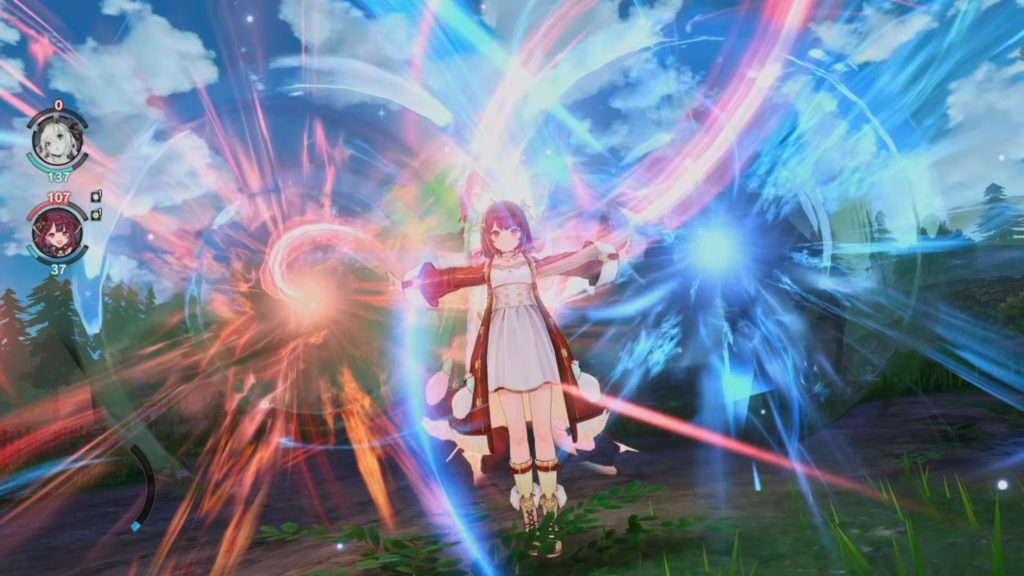
The Story Set Up
Part of the reason I enjoy gaming is the escapism it provides. There are many games that want to be realistic and authentic to the real world, but I also like being completely transported to fantasy worlds that you can become lost in and forget about the real world. In Atelier Sophie 2 you are both figuratively and literally thrown into a dream world from the very start.
“Atelier Sophie 2: The Alchemist of the Mysterious Dream continues the story of Sophie and Plachta’s many adventures. After leaving Sophie’s hometown of Kirchen Bell, the pair discovers a huge tree identical to one that Plachta had seen in a dream, and as they get closer, a mysterious vortex pulls them inside. Sophie awakens alone in a curious new world called Erde Wiege, and it’s not long before she hears about an alchemist named Plachta that lives on the outskirts of town. Shockingly, when Sophie arrives at the atelier, she meets a young alchemy enthusiast named Plachta, and even though the alchemist shares the same name as her friend, she doesn’t recognise Sophie.”
It was incredibly easy to play the game and switch off from everything around me in the real world. The story is charming, delightfully told and interesting, whilst also remaining light and non-serious, and the characters each had great personalities, which helped push the story along. It is always the humorous characters that stick out to me, and Alette Claretie is especially superb. I’ll keep it spoiler-free here, but the story is reminiscent of Back to the Future, with the twist being the characters meet people they know not just from the past, but the future as well. It makes for an interesting narrative that is really enjoyable and delivered with confidence.
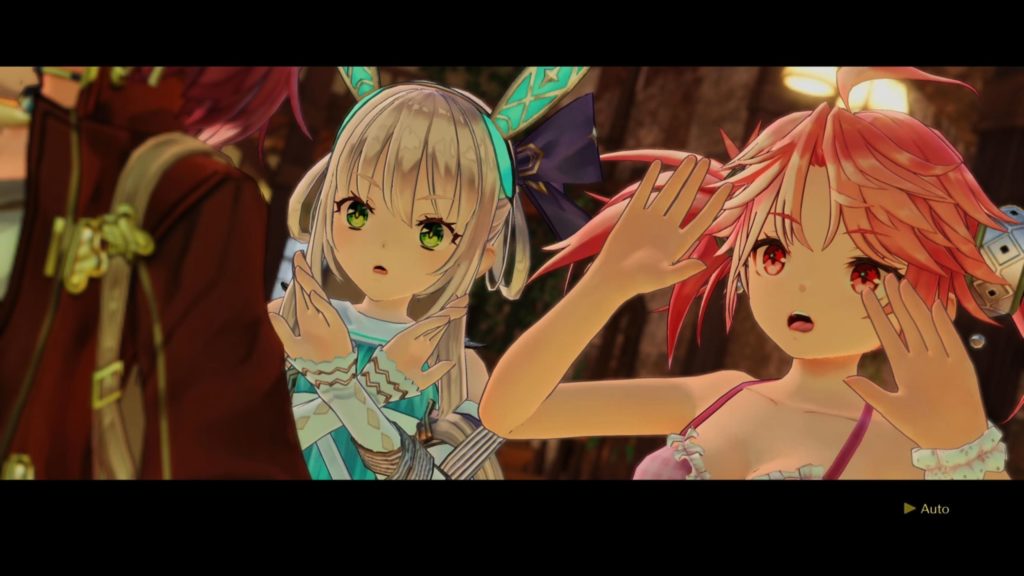
Graphics and Audio
Atelier Sophie 2 only has a PS4 version at present, with no mention of if or when a PS5 version will arrive. Although I was at first disappointed I needn’t have been; The PS4 era is coming to a close and, as always, the best looking games come at the end of a generation. The artwork and graphics of Atelier Sophie 2 are achingly beautiful – Sumptuous settings, outrageous outfits, courageous use of colour – it truly is a masterclass of artwork.
Compared to the first game, the settings are more interesting, with more detail, intricate textures and sharper rendering. Instead of the odd clump of grass on a flat patch of green, we have whole areas of grasslands interspersed with other types of foliage. The character models are also aggressively outrageous which makes them fun to look at. I will mention though that the base costume for Alette was a little too outrageous, so much so that even changing her clothes to a swimwear outfit vastly improved and covered her up.
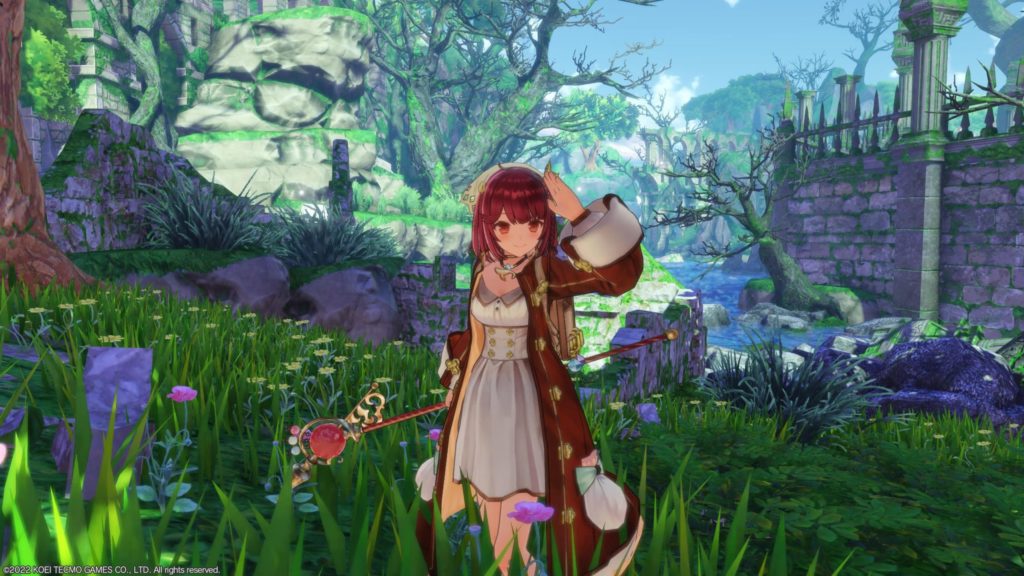
The engine running the game is the same as used in Atelier Ryza 2, but a slight sparkle of extra detail has been added to the 3D models. To my eye, I initially thought that this PS4 game looked even better than the PS5 version of Atelier Ryza. I had to reload Ryza 2 to check. Although the definition of Ryza on the PS5 is slightly sharper, it is a testament to how well the PS4 version looked and ran that I felt the need to check at all! Although Atelier Sophie 2 only runs at 30fsp, the game ran incredibly smoothly with no issues, even when put to the test with fast action, highly detailed movements and flashy finishers. There was no texture pop-in, camera issues, stuttering or any other issues of any kind. I hope that in the future there is a PS5 version with a 60fps update, as it would look stunning at that frame rate.
The background soundtracks also really stood out. The base theme of the game felt like a variation of an Irish Jig, but there were distinct variations throughout the game. One area had Japanese overtones and featured traditional Japanese instruments, while another was filled with a serene, relaxed and mellow chillout-room vibe.
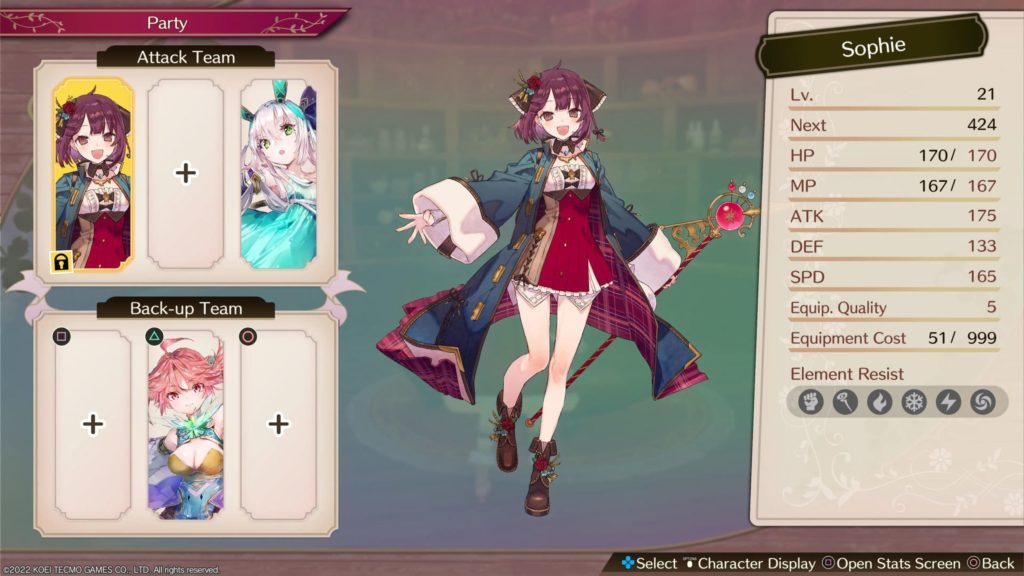
Synthesising master class!
There are three main components to the game: Exploration, synthesising and combat. Of the three, synthesis is the most complex and unique, but with some excellent tutorials and helpful features, it was never too overwhelming.
The main differences to previous games are that there are now two characters who can synthesise, for which both will be needed to progress the story, and the synthesising system is now grid-based. Although on paper the grid system sounded a little boring, it was excellent fun and almost like Tetris to use. Each component of an item used in alchemy has different elements and numbers of nodules. These are represented by different shapes and colours to be fitted into a grid. Overlap two nodules and the attributes of the first to be placed will be cancelled out, but by matching two nodules of the same colour next to each other or even on a corresponding attribute on the table you get bonuses applied.
It is a game within a game trying to figure out where to place the different elements onto the grid. Helpfully, you can allow the game to autofill the grid once you’ve chosen which items to use. The results were very good, as I rarely found better combinations manually.
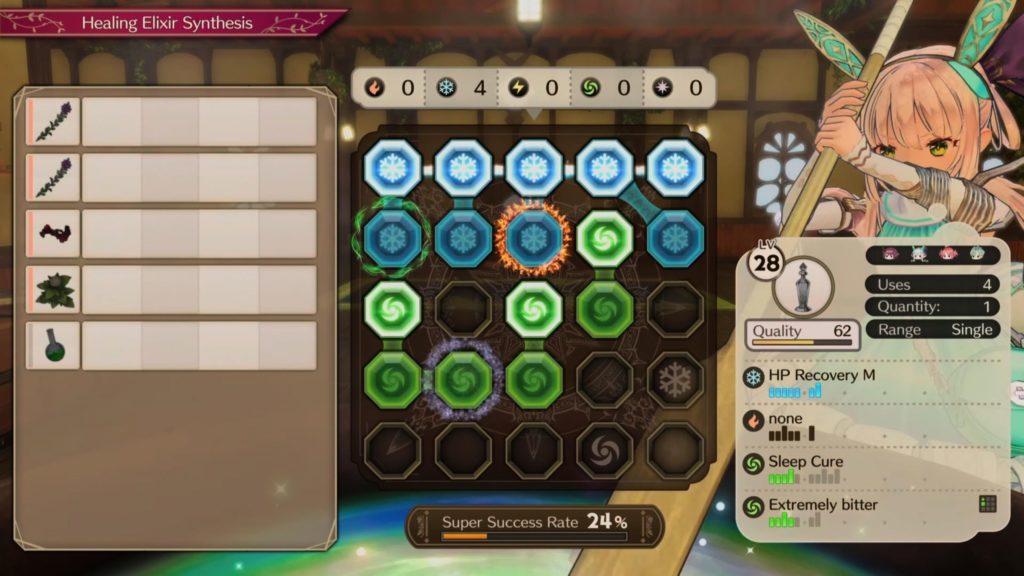
Collecting and Combat
Although it may sound quite tedious, collecting items to use for recipes was also another game with the game. Having played many of the previous Atelier games, one criticism I have is that finding out what items are needed for a recipe involves searching deep within the menus to find what that material was, and where it was located. Here, however, they have streamlined the system to just a few button presses.
Fast travelling around the world has also been slightly improved, making it easy to jump from one location to the next via stone waypoints. Once you touch these waypoints they can then be used to instantly travel back to.
Part of the collection process also involves obtaining some items that are needed from monsters, too. Of all the systems, the combat has changed the most compared with the Atelier Ryza series, as it’s now a much more traditional evolution of the turn-based system. If I’m honest, I wasn’t a fan of the real-time turn-based system used in Atelier Ryza, as the actions, although fun, happened far too quickly to really enjoy. Here you can take your time to decide your moves, as well as enjoy the cinematics without time pressure.
The new aspect, though, is the excellent tag team multi-link system. This incorporates up to six members in the team: 3 front line and 3 backups. Once enough link points have been accrued through normal hits, you can then unleash link attacks. This uses up those points but allows characters to use their backup partner to deliver powerful double-action blows for much bigger damage. Backup players can also come in to block an enemy attack and then remain in the fight. Tactically swapping players in and out, and experimenting with different combinations for the maximum effect was great.
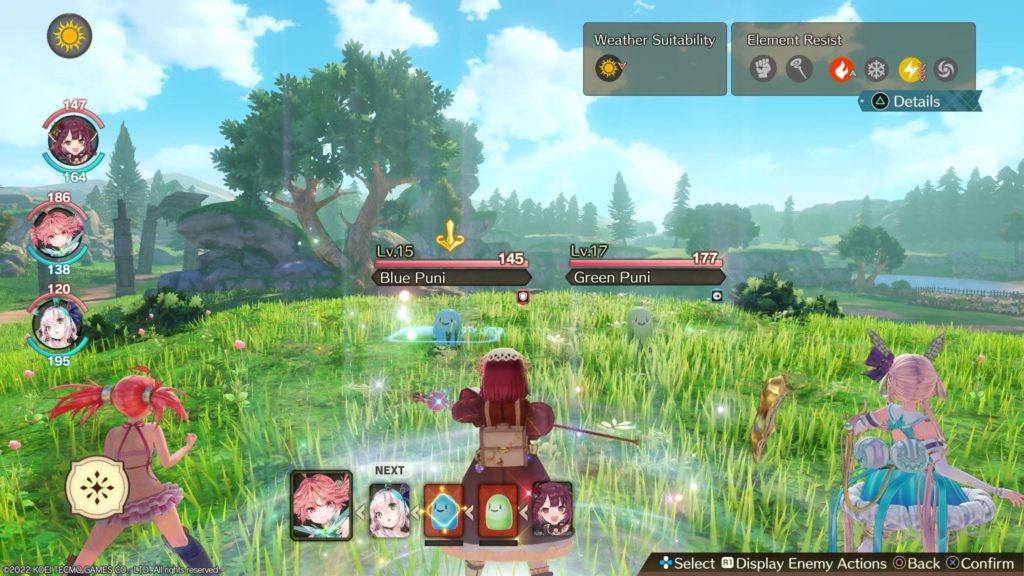
Adding to the improved accessibility, you can now view which of your team is being targeted by which enemy with a single button press. This allows you to know which of your party will need to block and defend themselves during the next attack. The game is simply doing its best to really help the player and not hinder or trick them into making mistakes as so many others in the genre do. This doesn’t make the combat any easier, as it still requires careful balancing of the team, materials, link points and skills to win, but it’s laid out perfectly to help you decide.
The experience
The saying, “if it isn’t broke, don’t fix it”, feels appropriate here. There are many traditional aspects of Atelier Sophie that don’t re-write the genre in any way. It is at its heart still a turn-based, fantasy-world, third-person adventure, like many others in the genre. Where Atelier Sophie 2 takes it further is in the detailed artwork, excellent character designs and music, and deep yet simple to use systems that make sense and fit together so well. All of the features of the game work very well together, with no single aspect feeling weaker or stronger than the others.
The only real negative is that the story does take a little while to get going, and there aren’t that many big “wow” moments, especially early on. I didn’t really care too much about pushing the story, though, because I was talking to so many NPCs to get a feel for the lore, exploring each nook and cranny because it was all beautiful to look at, and experimenting with alchemy and combat mechanics.
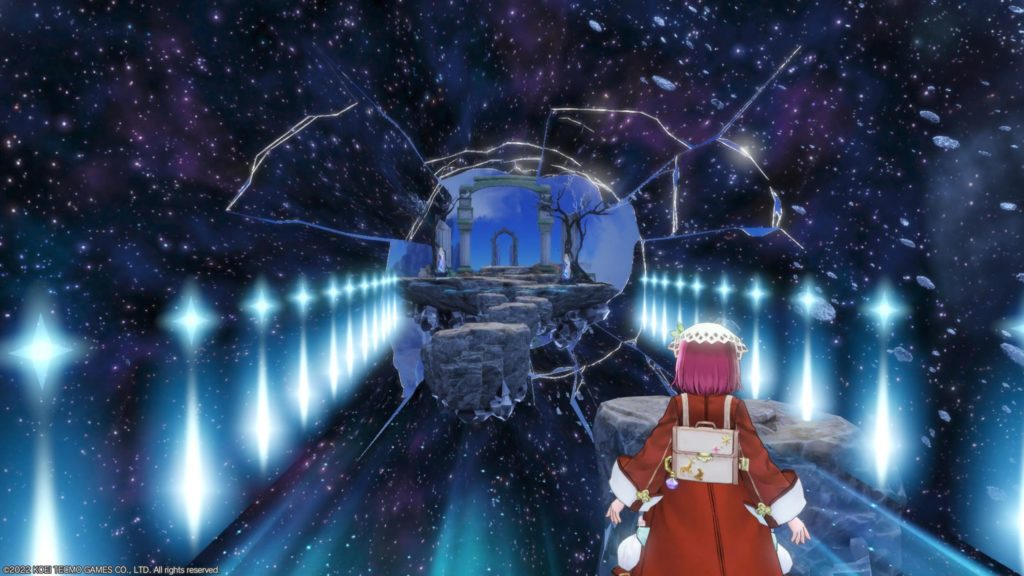
Summary
GUST has tidied up and polished over a lot of little aspects of the game and delivered a finely honed, pleasant and rewarding experience that has resulted in arguably the best Atelier game ever made. The systems are deep yet accessible, and the story is intriguing, endearing and superbly acted. Coupling all this with excellent graphics, artwork and outstanding music means that this is not just the best Atelier game ever made, but also one of the best JRPGs.

